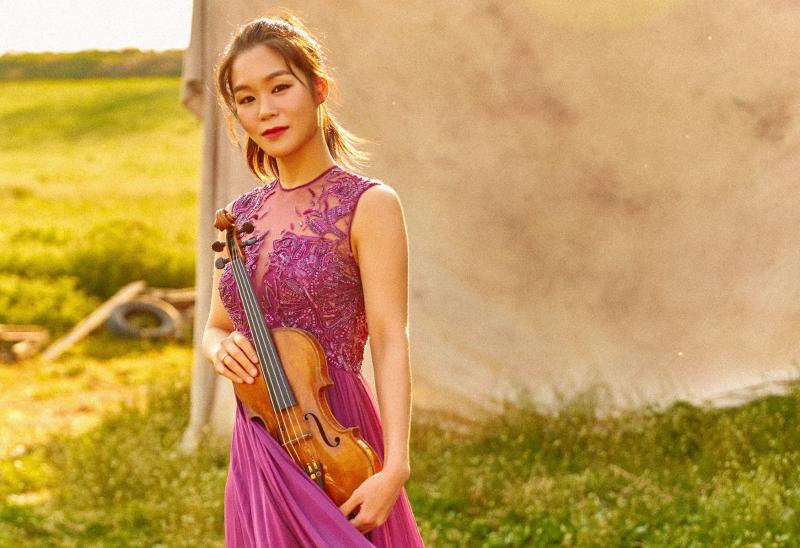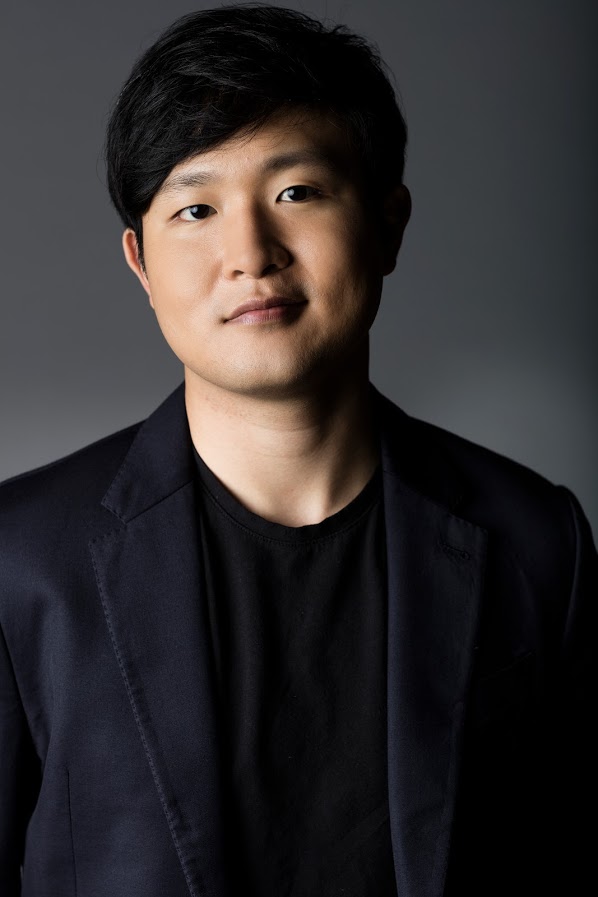Esther Yoo, Yekwon Sunwoo, Wigmore Hall review - Korean duo needs time to develop | reviews, news & interviews
Esther Yoo, Yekwon Sunwoo, Wigmore Hall review - Korean duo needs time to develop
Esther Yoo, Yekwon Sunwoo, Wigmore Hall review - Korean duo needs time to develop
A mixed bag in this new violin-and-piano duo's recital

The duo partnership between violinist Esther Yoo and pianist Yekwon Sunwoo is still at a very early stage.
Esther Yoo left a very strong impression when I heard her at the 75th Anniversary Gala of the Chapelle Musicale Reine Elisabeth in Brussels in 2014. What has stayed in the mind ever since that memorable concert is the insouciant ease and almost mischievous joy with which she dealt with the virtuosic demands of the Waxman Carmen Fantasy. Last night she chose Henri Vieuxtemps’ Souvenir d'Amerique (Variations Burlesques on "Yankee Doodle") as the show-stopping encore, a reminder that achieving wonderful feats of bravura with a smile is home territory for her. Going rather deeper, Kreisler’s Recitativo and Scherzo-Caprice for solo violin from 1911, possibly the highlight of the evening, brought out a wonderful instinct for pacing, and a deep sense of the freedom, invention and glorious sound she can muster.
 Yekwon Sunwoo (pictured right by Jeremy Enlow / Cliburn Competition) also played a pair of solo items, arrangements of songs by Richard Strauss. In “Morgen”, arranged by Max Reger, he worked with the curious temptation to stretch out the length of phrases way beyond anything that would be possible or conceivable for a human voice, and in “Ständchen” Op. 17 the lightness and glimmer of his playing were affecting, but the climax of the song needed a lot more passion and a clearer sense of having arrived at a peak.
Yekwon Sunwoo (pictured right by Jeremy Enlow / Cliburn Competition) also played a pair of solo items, arrangements of songs by Richard Strauss. In “Morgen”, arranged by Max Reger, he worked with the curious temptation to stretch out the length of phrases way beyond anything that would be possible or conceivable for a human voice, and in “Ständchen” Op. 17 the lightness and glimmer of his playing were affecting, but the climax of the song needed a lot more passion and a clearer sense of having arrived at a peak.
The Strauss song arrangements were an appetiser for the big-boned Richard Strauss E flat Sonata from 1887, a piece which Heifetz made his own and recorded three times. Yoo and Sunwoo were at their most persuasive and at home with the gentleness and lyricism of the andante cantabile second movement. By contrast, they could have made more of the more extrovert sections of the outer movements. Yoo too often made a strong impression but then allowed her sound to fade and retreat. In general the balance between the violin and the Steinway was well achieved throughout this recital, but in a Strauss Sonata the odds are clearly stacked in favour of the piano.
The pair also played sonatas by Beethoven and Debussy. Yoo is indeed, as her publicity material states, an “articulate and gifted communicator” and advocate for classical music, but these performances were a reminder that musicians really do need time and space to work and develop interpretations. External circumstances are not in their favour; young musicians surely need to build the habits of being on stage together, of trying things out in live performance.
Nonetheless, this concert was a further reminder of the success of the Wigmore’s two-pronged policy of free streaming with the invitation to donate, paired with discounted tickets for Under-35s. It is worth going just to experience the unexpected, the intangible yet clearly palpable: there is a new youthful buzz in this Hall which is so full of history and memories.
rating
Explore topics
Share this article
Add comment
The future of Arts Journalism
You can stop theartsdesk.com closing!
We urgently need financing to survive. Our fundraising drive has thus far raised £49,000 but we need to reach £100,000 or we will be forced to close. Please contribute here: https://gofund.me/c3f6033d
And if you can forward this information to anyone who might assist, we’d be grateful.

Subscribe to theartsdesk.com
Thank you for continuing to read our work on theartsdesk.com. For unlimited access to every article in its entirety, including our archive of more than 15,000 pieces, we're asking for £5 per month or £40 per year. We feel it's a very good deal, and hope you do too.
To take a subscription now simply click here.
And if you're looking for that extra gift for a friend or family member, why not treat them to a theartsdesk.com gift subscription?
more Classical music
 Scottish Chamber Orchestra, Ibragimova, Queen’s Hall, Edinburgh review - rarities, novelties and drumrolls
A pity the SCO didn't pick a better showcase for a shining guest artist
Scottish Chamber Orchestra, Ibragimova, Queen’s Hall, Edinburgh review - rarities, novelties and drumrolls
A pity the SCO didn't pick a better showcase for a shining guest artist
 Kilsby, Parkes, Sinfonia of London, Wilson, Barbican review - string things zing and sing in expert hands
British masterpieces for strings plus other-worldly tenor and horn - and a muscular rarity
Kilsby, Parkes, Sinfonia of London, Wilson, Barbican review - string things zing and sing in expert hands
British masterpieces for strings plus other-worldly tenor and horn - and a muscular rarity
 From Historical to Hip-Hop, Classically Black Music Festival, Kings Place review - a cluster of impressive stars for the future
From quasi-Mozartian elegance to the gritty humour of a kitchen inspection
From Historical to Hip-Hop, Classically Black Music Festival, Kings Place review - a cluster of impressive stars for the future
From quasi-Mozartian elegance to the gritty humour of a kitchen inspection
 Shibe, LSO, Adès, Barbican review - gaudy and glorious new music alongside serene Sibelius
Adès’s passion makes persuasive case for the music he loves, both new and old
Shibe, LSO, Adès, Barbican review - gaudy and glorious new music alongside serene Sibelius
Adès’s passion makes persuasive case for the music he loves, both new and old
 Anja Mittermüller, Richard Fu, Wigmore Hall review - a glorious hall debut
The Austrian mezzo shines - at the age of 22
Anja Mittermüller, Richard Fu, Wigmore Hall review - a glorious hall debut
The Austrian mezzo shines - at the age of 22
 First Person: clarinettist Oliver Pashley on the new horizons of The Hermes Experiment's latest album
Compositions by members of this unusual quartet feature for the first time
First Person: clarinettist Oliver Pashley on the new horizons of The Hermes Experiment's latest album
Compositions by members of this unusual quartet feature for the first time
 Gesualdo Passione, Les Arts Florissants, Amala Dior Company, Barbican review - inspired collaboration excavates the music's humanity
At times it was like watching an anarchic religious procession
Gesualdo Passione, Les Arts Florissants, Amala Dior Company, Barbican review - inspired collaboration excavates the music's humanity
At times it was like watching an anarchic religious procession
 Classical CDs: Camels, concrete and cabaret
An influential American composer's 90th birthday box, plus British piano concertos and a father-and-son duo
Classical CDs: Camels, concrete and cabaret
An influential American composer's 90th birthday box, plus British piano concertos and a father-and-son duo
 Cockerham, Manchester Camerata, Sheen, Martin Harris Centre, Manchester review - re-enacting the dawn of modernism
Two UK premieres added to three miniatures from a seminal event of January 1914
Cockerham, Manchester Camerata, Sheen, Martin Harris Centre, Manchester review - re-enacting the dawn of modernism
Two UK premieres added to three miniatures from a seminal event of January 1914
 Kempf, Brno Philharmonic, Davies, Bridgewater Hall, Manchester review - European tradition meets American jazz
Bouncing Czechs enjoy their Gershwin and Brubeck alongside Janáček and Dvořák
Kempf, Brno Philharmonic, Davies, Bridgewater Hall, Manchester review - European tradition meets American jazz
Bouncing Czechs enjoy their Gershwin and Brubeck alongside Janáček and Dvořák
 Solomon, OAE, Butt, QEH review - daft Biblical whitewashing with great choruses
Even a top soprano and mezzo can’t make this Handel paean wholly convincing
Solomon, OAE, Butt, QEH review - daft Biblical whitewashing with great choruses
Even a top soprano and mezzo can’t make this Handel paean wholly convincing
 Two-Piano Gala, Kings Place review - shining constellations
London Piano Festival curators and illustrious friends entertain and enlighten
Two-Piano Gala, Kings Place review - shining constellations
London Piano Festival curators and illustrious friends entertain and enlighten

Comments
Reviews are in their nature
Thanks for taking the trouble
Thanks for taking the trouble to write, and for your advice which I am sure is well-intentioned. You do make one good point which I hadn't thought of: yes, the acoustics of Rows U-X of the Wigmore where you were sitting are indeed pristine, sublime, absolutely the best!